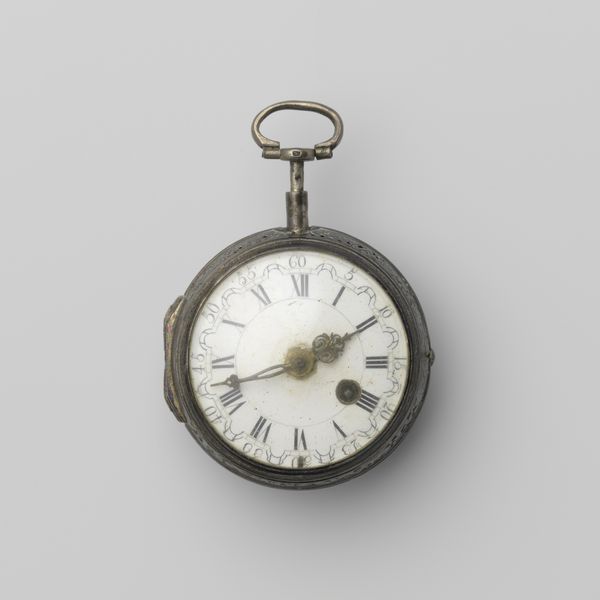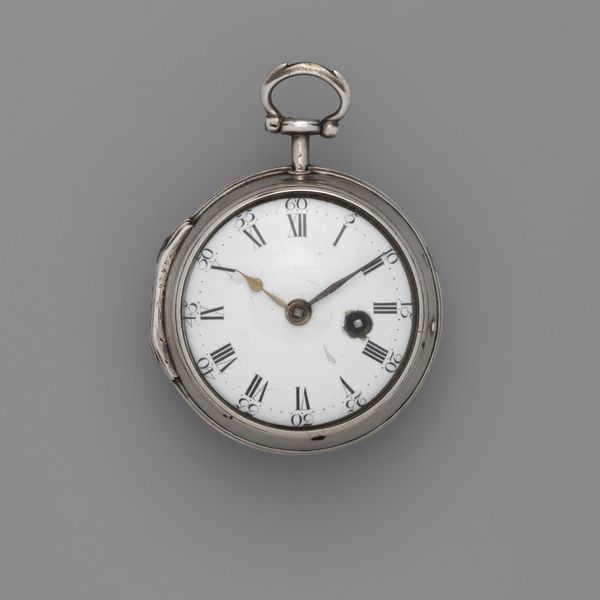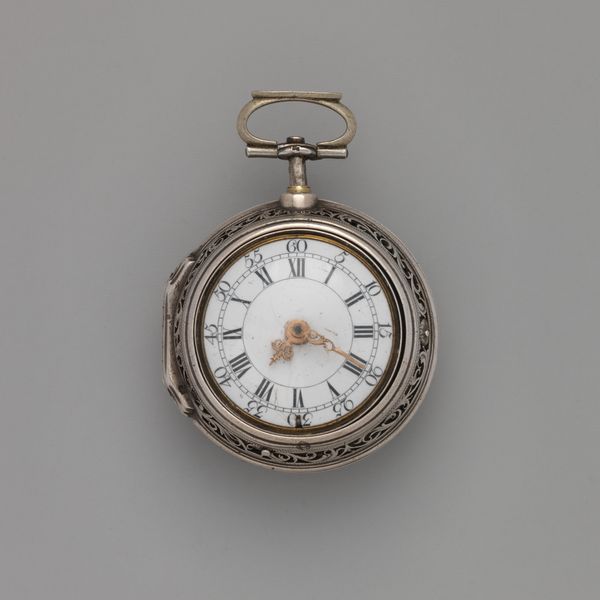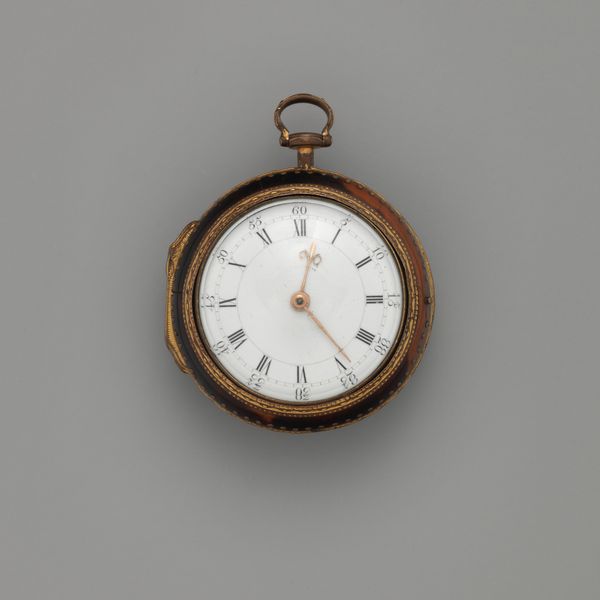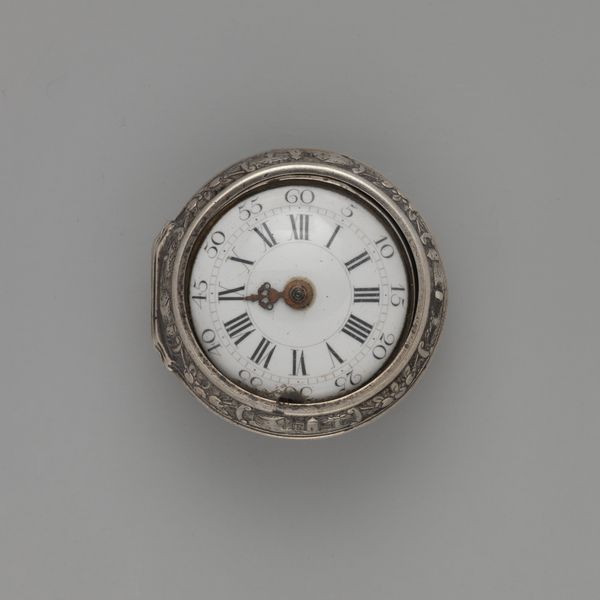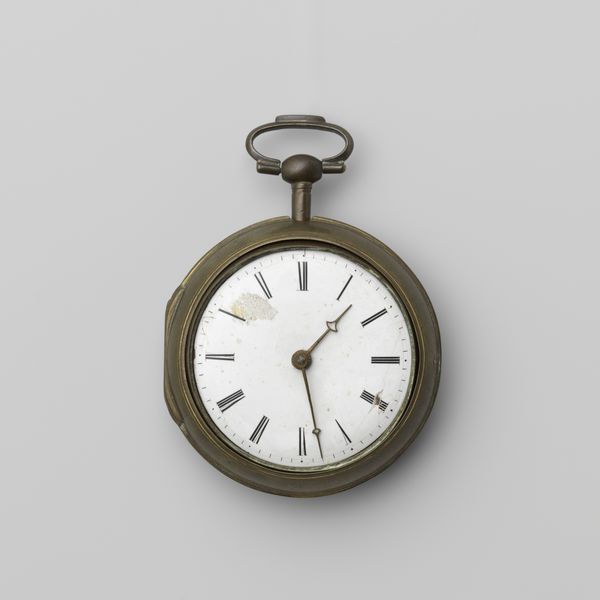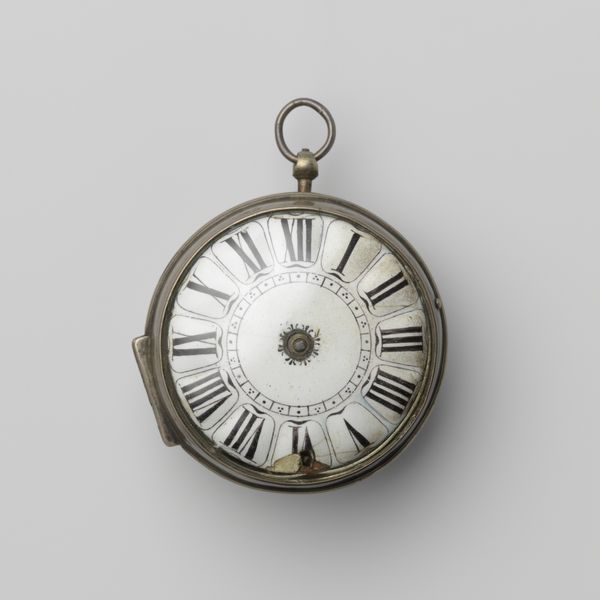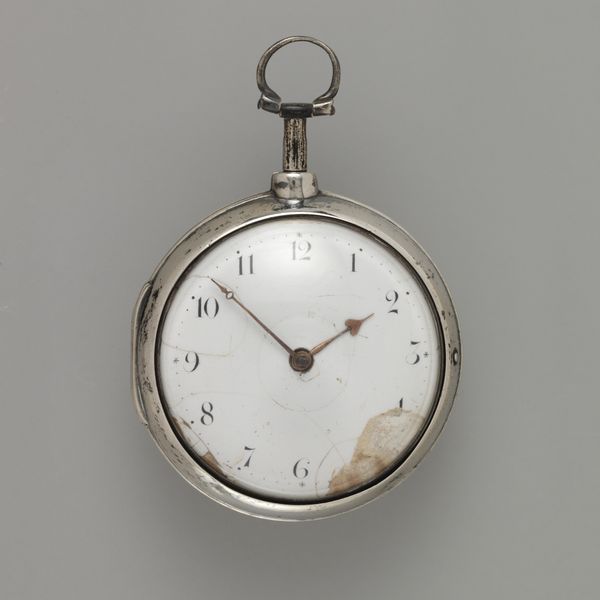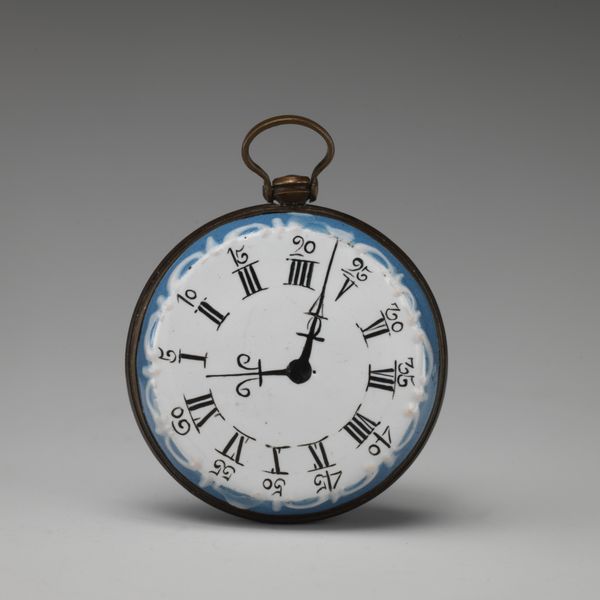
metal, sculpture
#
baroque
#
metal
#
sculpture
#
decorative-art
Dimensions: Overall: 1 1/2 × 1 1/4 in. (3.8 × 3.2 cm)
Copyright: Public Domain
Editor: This object, called “Watch,” dates from 1635 to 1655. It's crafted from metal and is currently housed at the Metropolitan Museum of Art. It strikes me as austere yet precious – how can something functional also feel so…ornate? What layers of interpretation can we peel back? Curator: That's a great starting point. How do you see the implications of time as an element of power, class, and gender in the 17th century, bearing in mind that owning a watch wasn't about knowing what time it was? How could a watch be used to project prestige, privilege, and patriarchal authority in a culture shaped by societal standards? Editor: So, more about showcasing access rather than pure utility? A symbolic declaration? Curator: Precisely! It would subtly broadcast a sense of status and economic privilege in Baroque-era European culture. Moreover, objects like these had their influence upon female figures of this period. What’s your thinking on how the restrictions of patriarchal norms impacted those women, and in what measure this item also worked in conjunction with systems that regulated social mobility for women at the time? Editor: That’s complex! Perhaps displaying items like watches acted as constraints. And conversely as quiet declarations of resistance. Thanks – seeing it through the lens of gender and power makes the artifact speak volumes. Curator: Indeed, and this illuminates just how much a seemingly straightforward object can reveal the nuanced realities of social dynamics that permeated throughout past societies.
Comments
No comments
Be the first to comment and join the conversation on the ultimate creative platform.
